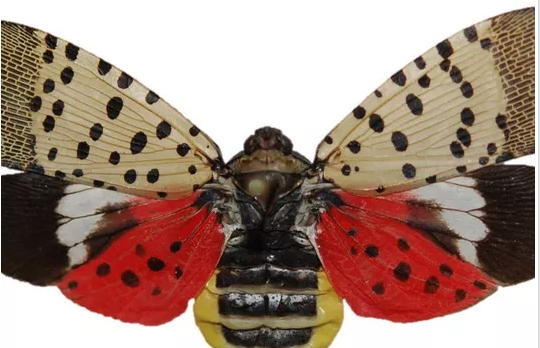The Spotted Lanternfly was first reported in the US in Berks County, but its range has grown — and Pennsylvania is asking for your help in stopping it. Folks in Berks and northern Chester Counties were inundated this past summer, but those that live in southern Chester, Montgomery, and Delaware Counties may not be as familiar.
But they’re coming.
The pest is native to Southeast Asia, it was discovered in Berks County in 2014. They don’t fly well, mainly hopping and gliding. Their primary means of transport, and what seems to be spreading them quickly, is catching a ride on your car or truck.
The PA Dept. of Agriculture has started a “Look Before You Leave” campaign, to remind residents to do a sweep of their vehicles before heading out.
The SFL lays its eggs in the fall, so now is the time to inspect trees and flat surfaces outdoors for egg masses — patios, patio furniture, and lumber could be places they’ll lay. The egg masses gray and are shiny at first, then begin to look like dried mud.
Left and top are SLF egg masses. The right are gypsy moth egg mass.
If you see an egg mass, the recommended thing to do is scrape them off, double bag them, and throw them away. As an alternative, submerge the masses in rubbing alcohol or hand sanitizer to kill them. Either way, report the eggs to the Dept. of Agriculture on theirreporting page.
To find out more about the SLF and how to combat them, the PennState Extension site has a comprehensive guide. Especially useful is the page dedicated to Spotted Lanternfly Management for Homowners.
Also check out the overview and recommendations on the PA Dept. of Agriculture website.
Unlike the Stinkbug, which is relatively harmless (if annoying), the SLF can cause real damage to fruit trees, grape production, hardwoods, and other agriculture and agricultural industries.
Send a photo of an SLF of any life stage (including egg masses) can be submitted to Badbug@pa.gov.
If you can’t take a specimen or photograph, call the Spotted Lanternfly hotline at 1-888-4BAD-FLY (1-888-422-3359) and report your sighting.




Recent Comments